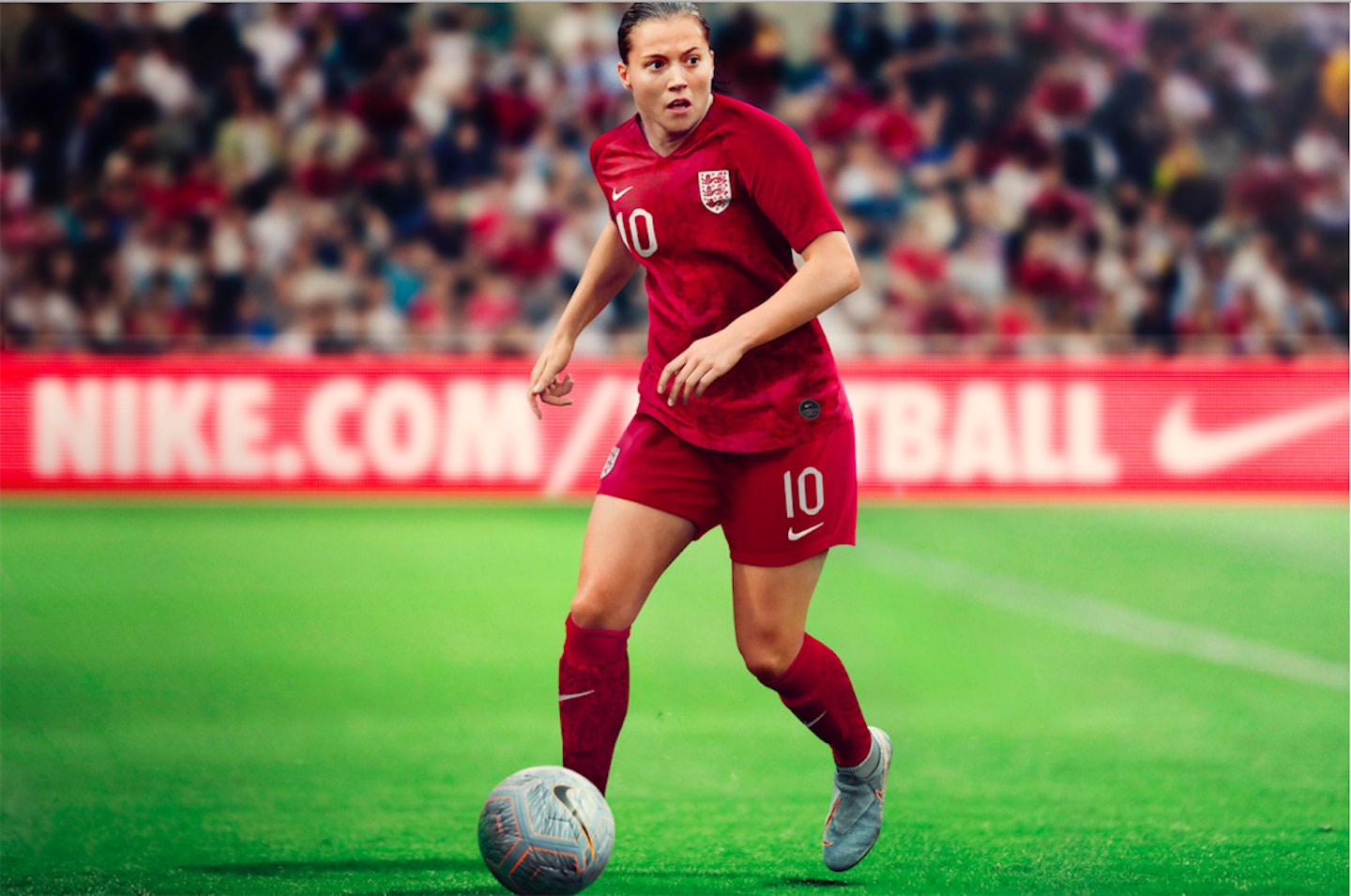‘Oh wow, this is amazing’ Cassie Looker exclaims, wiping away tears. We’re stood in the stands of Manchester City’s training stadium, surrounded by children cheering as England women’s football team run into formation, about to play against Canada. It’s not an important game for the season, at least in the eyes of the leader board, but it is an important game for the women playing, and the team at Nike. Because, it’s the first time the women's teams are wearing their very own, personally designed kit.
Cassie is the senior apparel product manager for the global football division at Nike, and for the past three years she has oversaw the production of 14 different kits, each designed for the 14 national teams playing in the Women’s World Cup this year. It’s a historic moment in women’s football, as the England women’s team have never had their own kit.
From the popularisation of women's football in the 1920's, through the creation of a Women’s Football Association in 1969 (and eventually their folding into the Football Association in 1993) till now - as the popularity of women's football resurges yet again - women have been wearing kits designed for men. Now, they have not only a kit that is aesthetically different from the men’s, but more importantly, technically different. A kit that is built for their bodies, for their needs, and to give them the comfort and confidence they need to smash the World Cup, which begins next month.
‘For the past three years we’ve had elite footballers come into our campus at Beaverton, Oregon,’ Cassie tells me, ‘We scan them in the 3D body scanners and through that process we analyse statistics and images of all the footballers compiled together.
‘That's where we found that there is a difference in these footballers from the standard size,’ she continued, ‘they generate so much power from their lower body, so they have more developed glutes and thighs and hamstrings. We were able to look at that body composition and compare that with garments that we currently have, to start to create garments that we're going to fit better with the athletes.’
Of course, it doesn’t stop there, a back and forth process ensued where ultimately, the women wearing the kit have the final word. After numerous wear tests with the athletes to find out what wasn’t working from a fit, fabric and detail perspective, the final kit was created. This was done for all 14 national teams playing in the World Cup, with 14 different groups of designers focusing on each nation to create the perfect ode not just to the players, but to the country competing. For example, England’s kit includes hand-drawn prints inspired by different regions of the country including the common poppy, Nottingham catchfly and traditional rose alongside many more flowers that intermingle form a floral pattern.
Click through to see the Nike women's World Cup kits...
Nike Women's World Cup Kits - Grazia
 1 of 3
1 of 3The 14 National Team Collections
 2 of 3
2 of 3The England women's home kit
 3 of 3
3 of 3The England women's away kit
The detail was important, because, for the teams at Nike, the images that come from this World Cup could be inspiring generations of girls forever. ‘We need to make sure that these are really special kits for each of the federations because there could be an iconic moment captured for a poster in a little girl’s room forever,’ says Cassie, ‘the level of detail in the design is thought about really carefully because of the magnitude of what it might mean.’
How was the uniform technically different to the former men’s kit they wore? According to Cassie, there were numerous things to consider. One of which: the ponytail problem. The women wanted a crew neck, but they also need to be able to rip it on and off easily without having their hair get in the way should it be in a bun or ponytail. It’s a simple consideration, but one that went without thought for years as women wore kits designed for men who tend to have short hair.
One way to solve it would be with a V-neck shirt, but there was a major problem with that for the athletes. ‘When we worked with men they preferred a tighter fit because it makes them feel really confident and like a superhero,’ Cassie says, ‘but the women had said they wanted to "look professional, be covered and be comfortable". So that doesn't mean a large garment, but something that is going to be tailored to them specifically. They definitely didn’t want a deep V or V neck.’
It’s an interesting outcome of the research, that female footballers are so aware of their need to be covered and comfortable while men prefer to show off their physiques in tight garments. Given the attention that other female athletes get for their uniforms, from tennis to netball, it’s unsurprising that the women are so conscious of how the male gaze can impact commentary on their performance.
‘We want to make sure they're confident on pitch,’ Cassie continues, ‘that they have zero distractions when they're playing so they can really focus on their game and all the hard work they've put into that.’
Considering the stakes of this World Cup, confidence truly is key if they want to establish the same success that brought the nation together for last years men’s World Cup and hopefully, achieve the same unprecedented level of support. Watching them play at Old Trafford's grounds, surrounded by such enthralling energy, the level of skill is engrossing from start to finish, so with the talent already obvious we can only hope that the nation is as ready to get behind the women’s team this year as they were the men’s last year.
